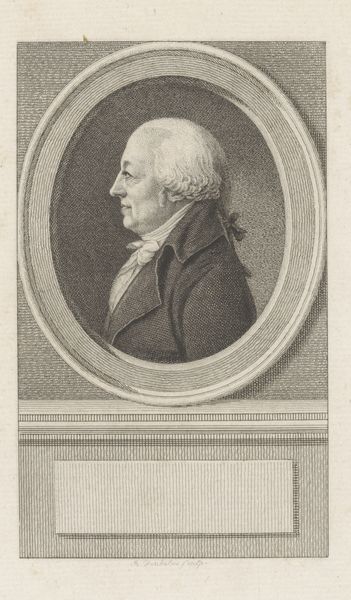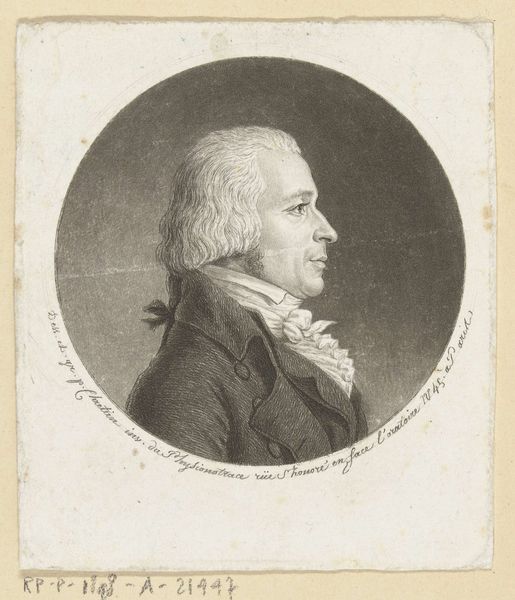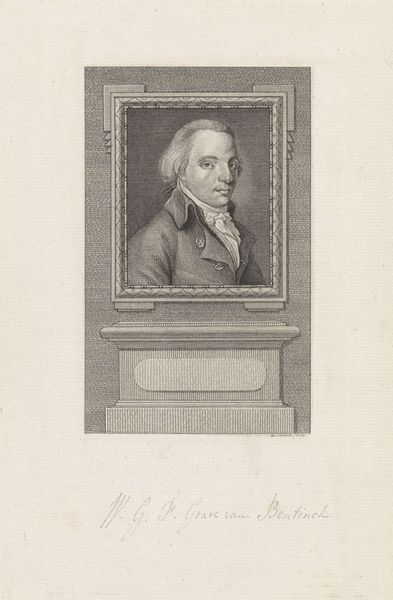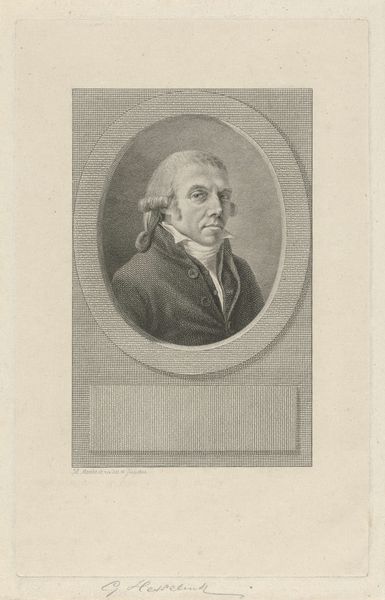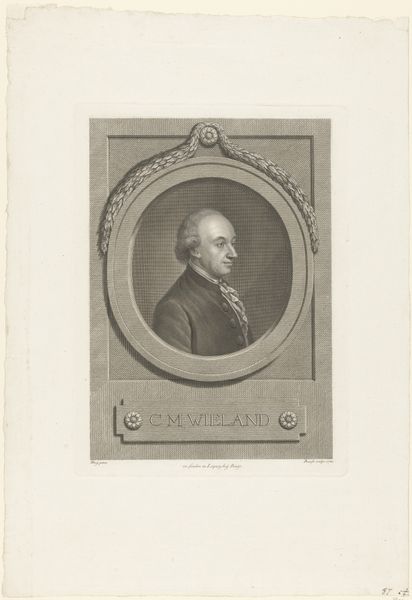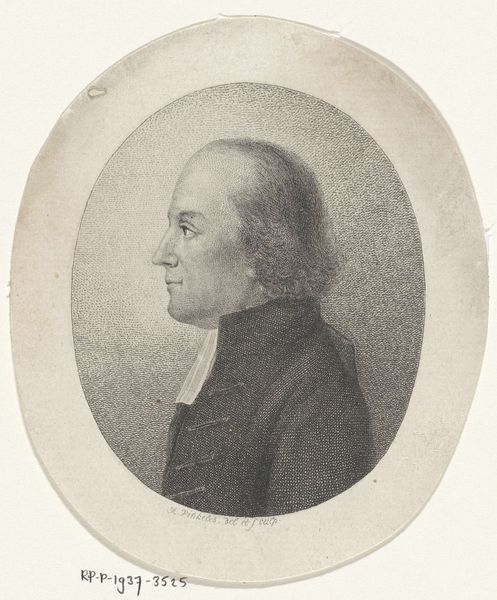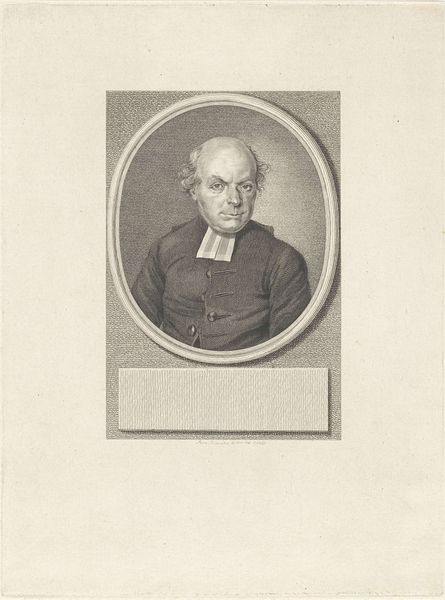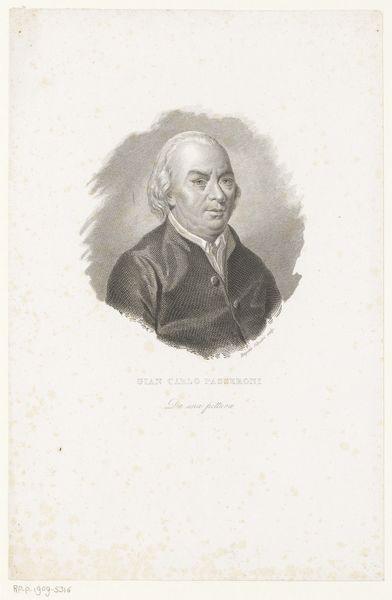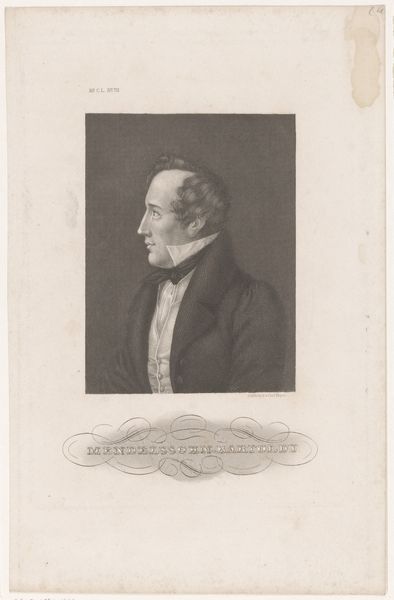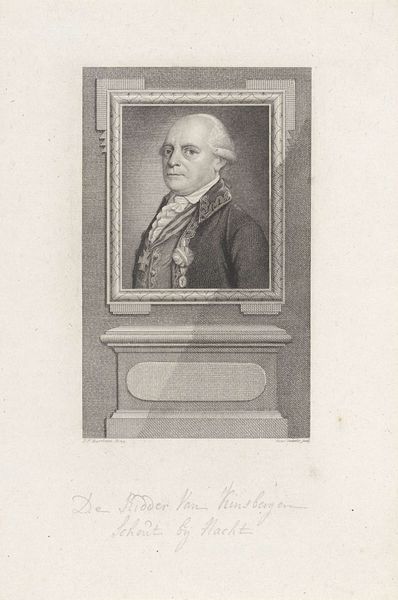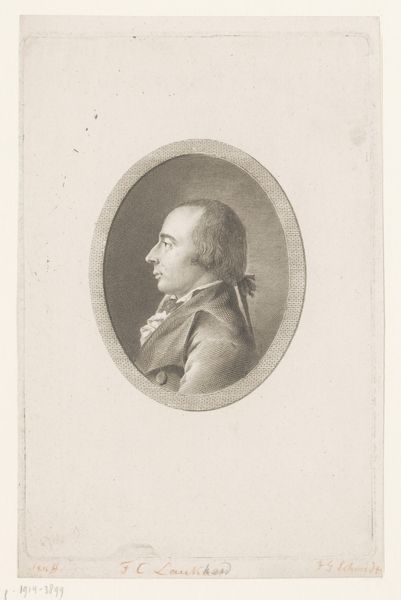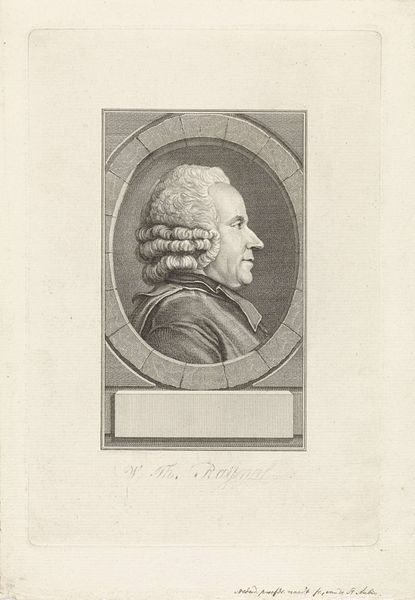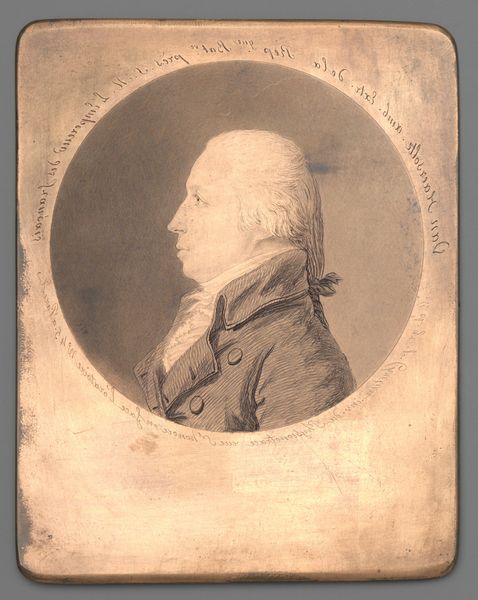
drawing, print, paper, engraving
#
portrait
#
print photography
#
drawing
#
neoclassicism
# print
#
paper
#
historical photography
#
united-states
#
history-painting
#
engraving
Dimensions: 149 × 121 mm (image); 176 × 128 mm (plate); 170 × 121 mm (primary support); 407 × 304 mm (secondary support)
Copyright: Public Domain
Editor: So, here we have Max Rosenthal’s 1899 engraving, "Portrait of Edward Savage," rendered on paper. The meticulous detail in the print is striking, especially how it captures light and shadow. How do you interpret this work? Curator: What immediately strikes me is not simply the image represented, but the means of its production and reproduction. Look closely at the material processes at play. We have Rosenthal, at the end of the 19th century, re-engraving a portrait of Edward Savage from an earlier print based on a painting. Editor: That’s like art being translated multiple times! Curator: Precisely! Each stage – from Savage’s original artistic labor, to Saint-Mémin’s print, to Rosenthal's engraving and the reproductive technologies enabling the wide dissemination of these images – reflects changing systems of patronage, artistic training, and access to art. Editor: So it’s less about Savage himself and more about how his image was consumed? Curator: It is about understanding that the creation and consumption of an image, like this, involves a complex web of labor and material conditions. These reproductions democratized access to portraiture, previously the domain of the wealthy, shifting its social value. Does that make sense? Editor: It does! Thinking about the printmaking process and its accessibility gives a whole new dimension to understanding portraits like these. It's not just about the sitter, but also about who got to see it and how it reached them. Curator: Exactly. By considering the labor and materiality, we challenge notions of originality and artistic genius, moving instead towards an understanding of art as a product of social and economic forces. Editor: I never thought about portraiture this way before, focusing instead on likeness and status. Thanks for a wider perspective!
Comments
No comments
Be the first to comment and join the conversation on the ultimate creative platform.
